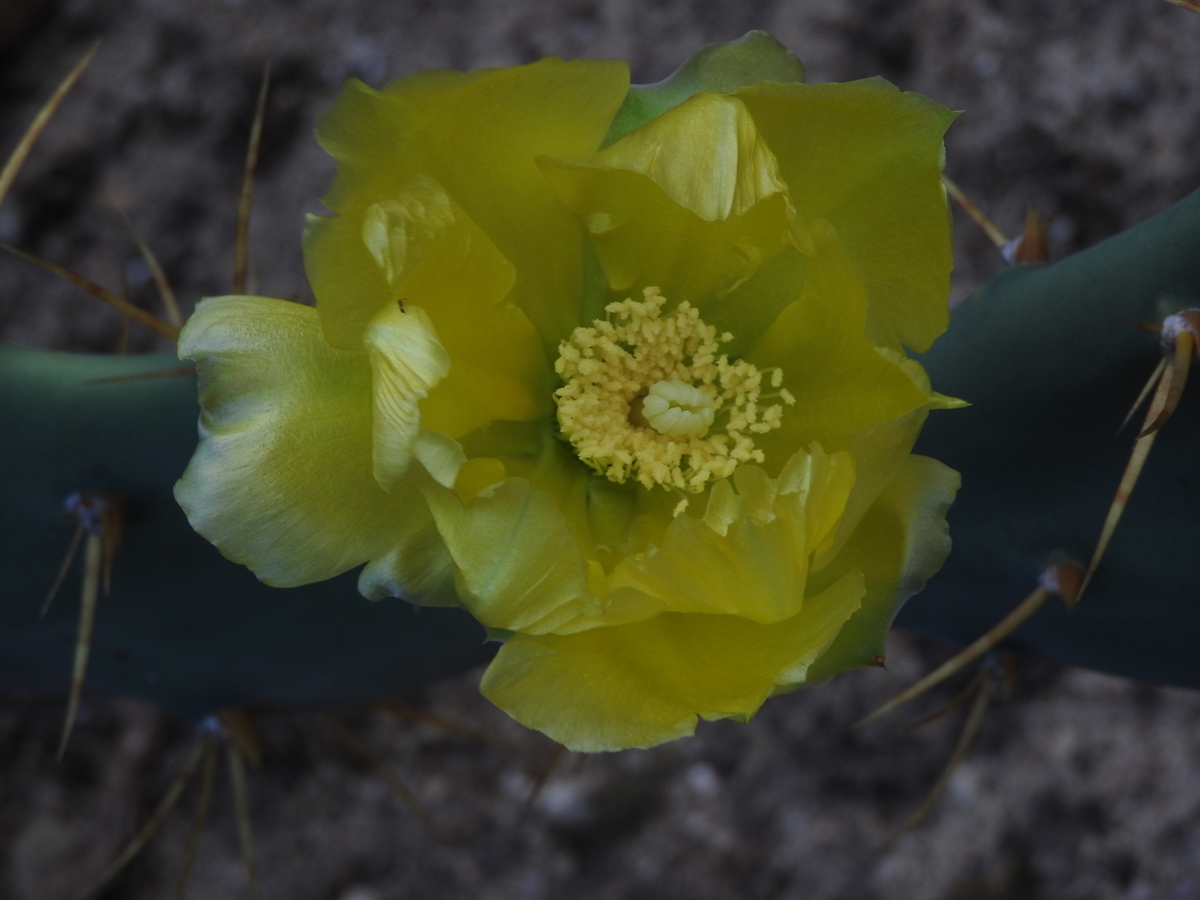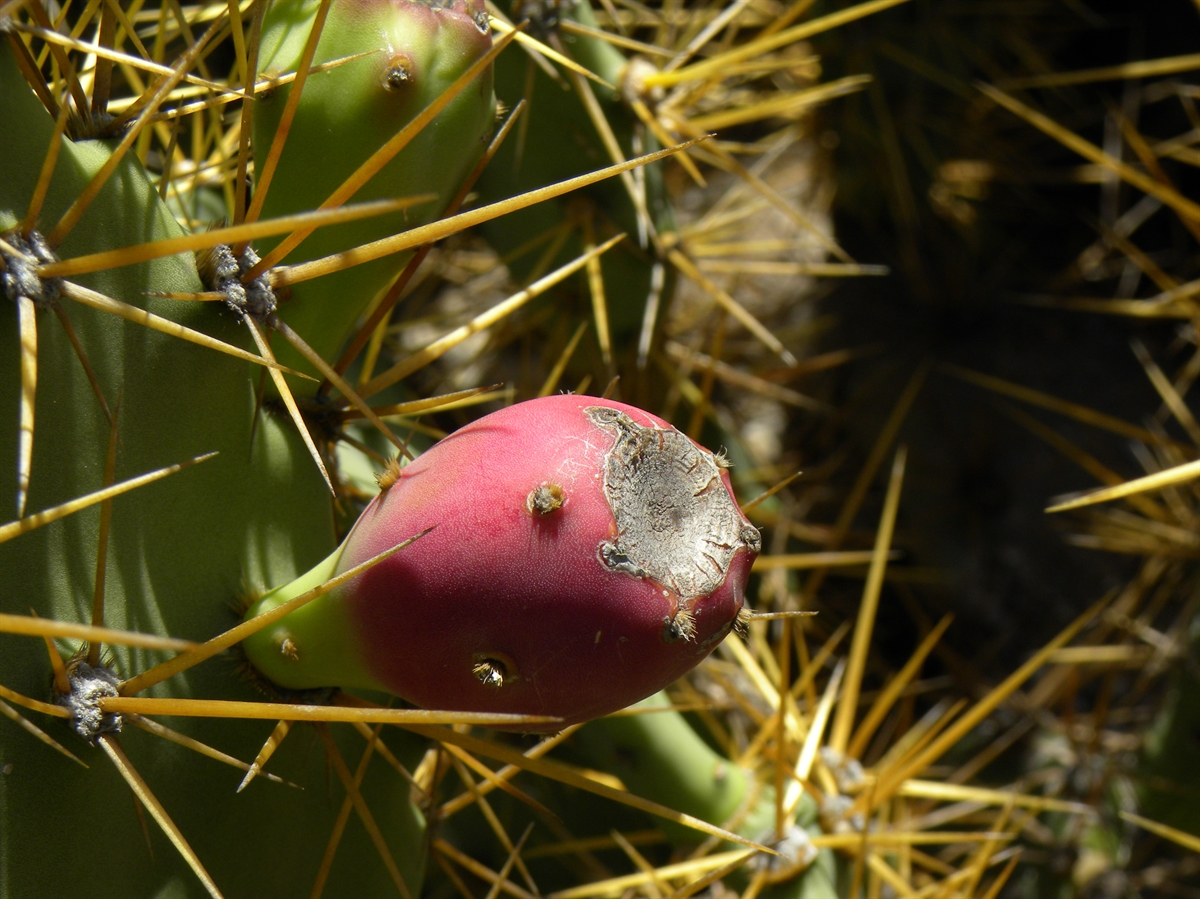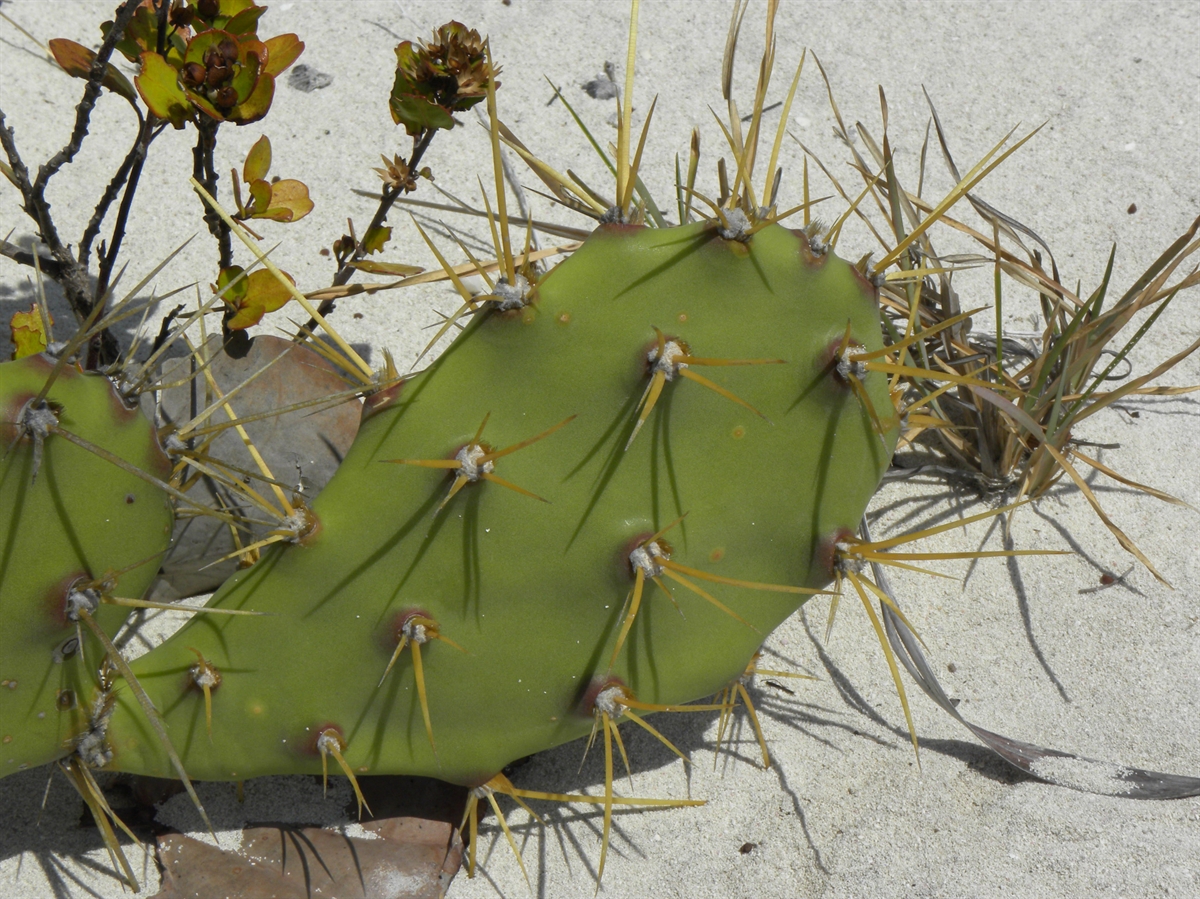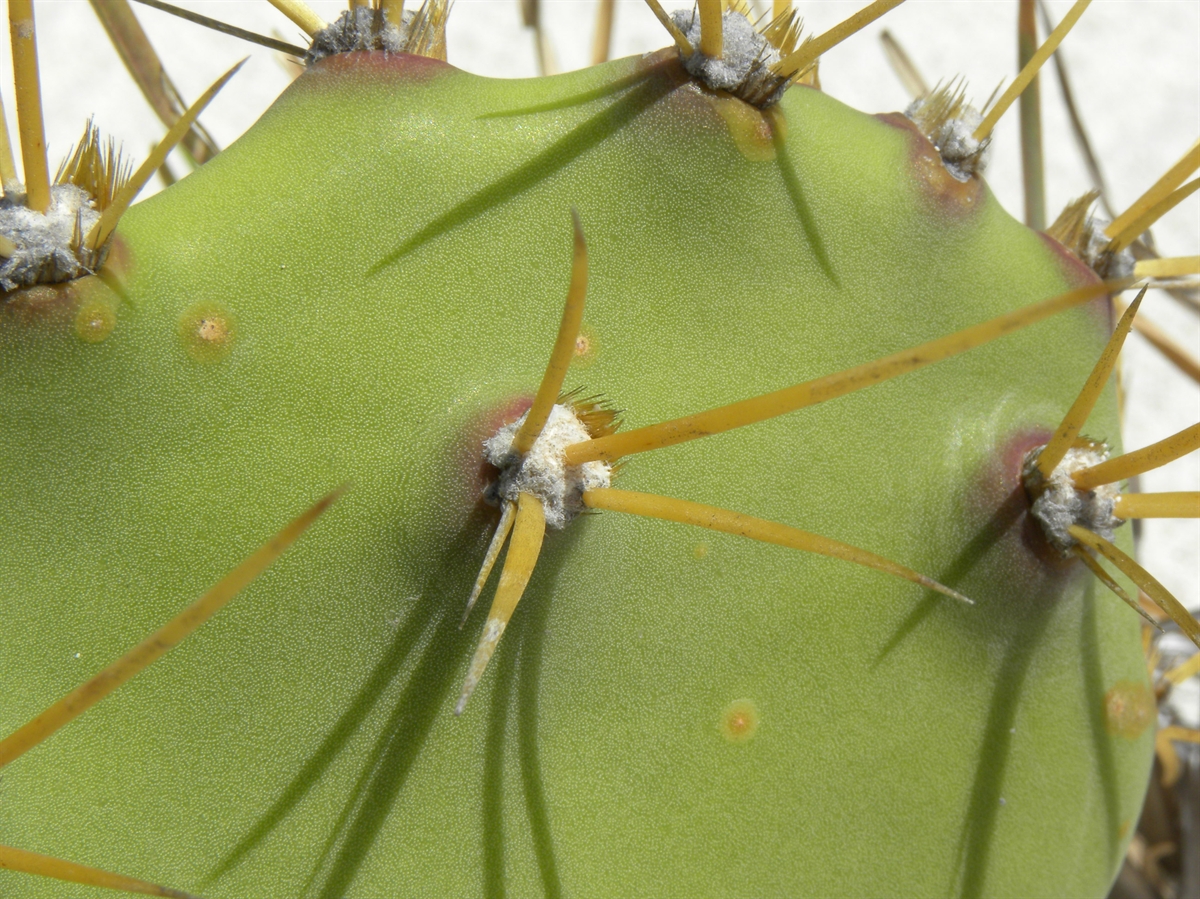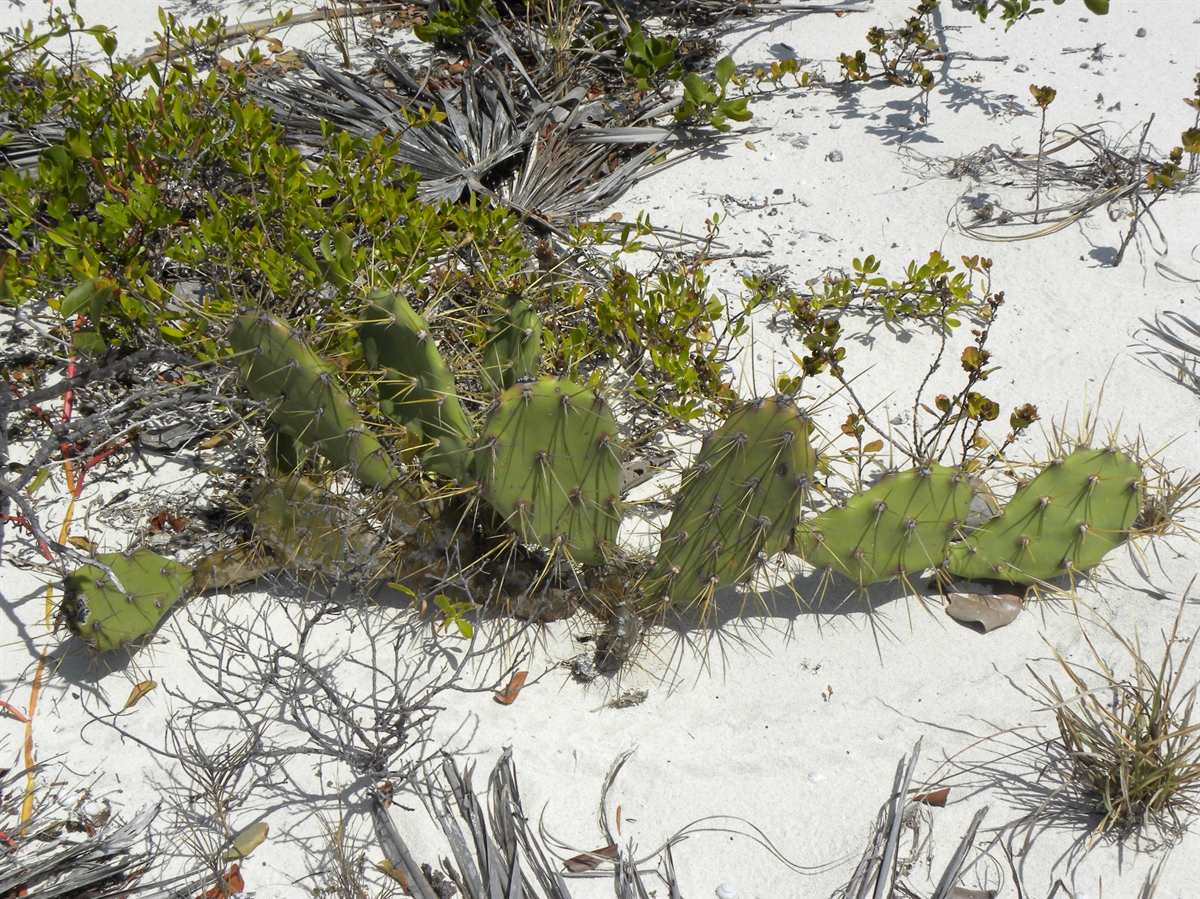Habit: Opuntia stricta grows as a multi branched shrub up to 2 m in height (usually shorter). The main trunk is short and up to 10 cm in diameter. From the trunk a series of photosynthetic joints (modified branches) arise. The joints are 15-35 in length, elliptic in shape with a crenate margin, and areoles in 3-4 rows. Each areole is up to 4 cm apart, slightly raised with 1-4 yellow spines and numerous glochids.
The complete, perfect, actinomorphic flowers are arranged solitarily developing from areoles along the upper edges of the joints. The calyx has numerous sepals. The corolla has numerous, red, petals and inside the perianth there are numerous stamens. The calyx, corolla and androecium are fused at their base to form a hypanthium. The ovary is inferior with a single locule and numerous seeds and covered with areoles with glochids. The fruit is a red berry.
Habitat: Opuntia stricta grows in coastal areas such as Dunes and Coccothrinax argentata Woodlands.
Distribution: Opuntia stricta occurs throughout all island groupings in the Lucayan Archipelago, Florida, the entire Caribbean region and Mexico.
Medicinal/Cultural/Economic usage: Opuntia stricta is used in the Lucayan Archipelago for circulatory problems (low blood pressure, anemia), gastrointestinal issues (constipation), coughs (tuberculosis), as well as pain (muscle pain, strains), dermatological treatments (hair care, dandruff). It also produces an edible fruit.
As with all cacti it is CITES listed.
